ROGER E. STAPLES
 WATERVILLE – Roger E. Staples passed away peacefully on Thursday, November 21, 2024, his 93rd birthday. Roger was born, in Lee, November 21, 1931. He was the fourth child of Wallace L. Staples and Amy (Gifford) Staples.
WATERVILLE – Roger E. Staples passed away peacefully on Thursday, November 21, 2024, his 93rd birthday. Roger was born, in Lee, November 21, 1931. He was the fourth child of Wallace L. Staples and Amy (Gifford) Staples.
Roger graduated from Lee academy in 1948 and graduated from the University of Maine, Orono, in 1954 with a degree in Botany. Roger lived in East Winthrop and worked at Lipman Poultry, in August,a before becoming a poultry farm inspector for the State of Maine, retiring in the late 1970s.
Roger lived the last 50 years of his life in Smithfield. He loved hunting, fishing, camping, and taking day trips throughout Maine. He and his wife tended their garden every year harvesting and canning their beans, beets, fiddleheads, tomatoes, and asparagus. He planted enough Katahdin potatoes every year to last them from fall to early spring.
Roger was a member of the Fairview Grange, in Smithfield, and the Smithfield Maine Historical Society. He spent one term as a town selectman.
Roger was predeceased by his wife, Joyce (Groves) Staples; two sons Stephen A. Staples and Timothy B. Staples; his eldest son, Lloyd W. Staples and his partner, David J. Broderick, of Boston, Massachusetts; three grandchildren, Timothy Staples and his wife Dominique, of Ocala, Florida, Justin Staples and Rebecca Staples, of Albion; and two great-grandchildren, Chase and Gage staples, of Ocala, Florida.
A private burial has been held.
Arrangements are under the direction and care of Gallant Funeral Home, 10 Elm Street, Waterville.
CAROLEE McINTYRE
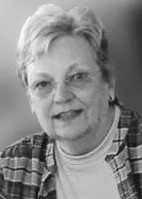 WINSLOW – Carolee McIntyre, 80, passed away on Friday, November 22, 2024. She was born on January 14, 1943, in Skowhegan, daughter of Elwood and Pauline (Greene) Gordon.
WINSLOW – Carolee McIntyre, 80, passed away on Friday, November 22, 2024. She was born on January 14, 1943, in Skowhegan, daughter of Elwood and Pauline (Greene) Gordon.
After graduating from Skowhegan High School, she trained at Thayer Hospital, in Waterville, where she became a licensed X-Ray technician. She worked briefly at the Arlington/Simms Hospital, in Waltham, Massachusetts, then returned to Redington-Fairview Hospital, in Skowhegan, before continuing her career at Thayer Hospital where she worked for 41 years at what is now MaineGeneral Medical Center.
She and her friend and colleague Amber George took over teaching the X-ray technician program within the hospital and she continued teaching when the program moved to KennebecValley Community College (KVCC), in Fairfield.
During this time, she was also the Chief X-Ray technician at the hospital, and eventually moved to the new FirstPark facility as Diagnostic X-ray Technologist. Over the years she came in contact with many of her former students who always thanked her for the education they received, and she was very proud of their successes.
She married Bruce McIntyre in1964 and they made their home in Waterville. Bruce passed away in 2008 and she remained in their home until 2021 when she moved to Goudreau’s Retirement Waterfront, in Winslow (She had a bit of a hard time with this move at first, since Winslow and Waterville were such big rivals!). At Goudreau’s she enjoyed friendships with the wonderful and caring residents and staff. The past three years were undoubtedly the easiest and most enjoyable for her.
Carolee was known for her quick wit, intelligence, and work ethic. She had a wry Maine Yankee sense of humor. Caring, determined, curious, frugal (there is that Maine Yankee thing again), strong willed, stubborn, introverted (until something got under her skin) stern, a bit stoic, loyal, and always generous are words that describe her personality that we all experienced.
She loved her family and friends and was happiest spending time with all of them. She enjoyed concerts at Portland Pops and plays at Maine State Music Theater. She loved golf and was the first to admit she was not very good at it. She and her friend of 50-plus years, Charlotte Roberge, took many golf trips to Myrtle Beach in hopes of improving their golf game. Watching Wheel of Fortune and Jeopardy was a daily ritual often enjoyed with her good friend Al Trask. She always looked forward to trips to the coast for lobster with her brother and lunch out with her sisters and the gang.
Carolee was predeceased by her father Elwood and stepmother Dee Gordon, her mother Pauline and stepfather Everett Ryer, her husband Bruce, and her in-laws Mac and Alice McIntyre.
She is survived by her sisters, Joni Gordon Beliveau (Peter), Janet Gordon Holden (Jim), of Portland; her brother Gary Ryer (Megan),of Hancock, New Hampshire; her niece Devin Beliveau, of Cranston, Rhode Island, her nephews, Jamie Holden, of Portland, Tim Holden (Wendi); great-niece Stella, of Yarmouth, and David Ryer of Atlanta, Georgia; along with several cousins.
A memorial service will be held in her honor at Skowhegan Federated Church, 13 Island Ave., Skowhegan on Friday,December 13, at 11 a.m. There will be a private burial in the spring.
Please visit Carolee’s memorial page at https://svremembrancecenter.com/obituaries/carolee-mcintyre where condolences, photos, and special memories may be shared.
PAUL E. PARENT
BENTON – Paul E. Parent, 92, a long-time Benton resident, passed away Monday, November 25, 2024, at his home, in Augusta.
He was thankful to have been head of the Social Studies Dept., at Lawrence High School, in Fairfield, where he taught U.S.History for nearly 20 years, and also for his 10-year tenure as a member of the Maine House of Representatives.
At his request, there will be no services.
KAREN ELLIS
 MILAN, New Hampshire – Karen Ellis, 81, of Milan, New Hampshire, passed away on Tuesday, November 26, 2024. She was born in Lynn, Massachusetts, on November 11, 1943, the daughter of the late Forrest and Grace (Brush) Ames.
MILAN, New Hampshire – Karen Ellis, 81, of Milan, New Hampshire, passed away on Tuesday, November 26, 2024. She was born in Lynn, Massachusetts, on November 11, 1943, the daughter of the late Forrest and Grace (Brush) Ames.
Karen moved to Maine as a child, and was a graduate of Waterville High School class of 1962, and raised her family in the Waterville-Winslow area for many years. She was employed by LaVerdiere’s headquarters, in Winslow, in the accounting department, as well as in the main store.
Karen enjoyed traveling throughout North America and Mexico and took several cruises. She was an avid reader and a talented crocheter, making mittens, hats, afghans, and sweaters for her children, as well as intricate doilies. She also enjoyed time spent snowmobiling and ATVing with family.
Additionally, she loved taking part in whatever activities her children and grandchildren were doing. She was her family’s biggest cheerleader. From the football field to field hockey, basketball, lacrosse, dance productions, and ice arenas, Karen was there supporting them in whatever events they took part.
Family includes her children, Allison White and life partner Brent Bennett, of Milan, New Hampshire, Wes Littlefield and wife Kendra, of Oakland, and Trudy Pontbriand and husband Michael, of Sabattus, Wanda Krajewski and husband Eddie, of Merrit Island, Florida, Maria Ellis, of Florida; and grandchildren Joshua and wife Serena, Weslee, Bodhi, Victoria, Michaela, EJ, Devon, Jaysa, Bryce; great-grandchildren Emma, Blake, Cameron, Bayleigh, and Luca; her sister Barbara Buterbaugh, of Clinton; and several nieces, nephews, and cousins.
Karen was predeceased by her husband Patrick J. Ellis; sister Marilyn Lacroix; and a brother, Forrest Ames, Jr.
A celebration of Karen’s life will be held in Maine on a date to be announced. She will be interred privately beside her husband at the Maine Veterans Cemetery, in Augusta, Maine.
Arrangements are entrusted to the Bryant Funeral Homes & Crematory, Berlin & Gorham, N.H. Memories and condolences may be shared online at http://www.bryantfuneralhome.net.
In lieu of flowers, those who wish may make donations in her memory to the North Country Home Health and Hospice Agency, 536 Cottage St., Littleton, NH 03561 or at nchhha.org.
KATHRYN L. LAUDER
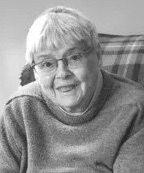 WATERVILLE – Kathryn “Kay” Lucile Lauder, 105, passed away on Wednesday, November 27, 2024, at Lakewood Continuing Care, in Waterville, following a brief illness.
WATERVILLE – Kathryn “Kay” Lucile Lauder, 105, passed away on Wednesday, November 27, 2024, at Lakewood Continuing Care, in Waterville, following a brief illness.
Kay was born in Indiana, the daughter of Richard and Mary Moling. She met her husband, Archibald “Art” Lauder when he was stationed in the U.S. Army, in Indiana, prior to serving in World War II in Europe. After Art’s service they married and moved to Massachusetts while Art attended college. They ultimately settled in Bridgewater, Massachusetts, where they raised their children, Shirrin and Jeffrey. During this time Kay and Art enjoyed watching their children’s sporting events, especially traveling across the Northeast to watch Jeff play football for U.Mass.
Kay worked in several secretarial positions, ultimately retiring as a medical secretary from Brockton Orthopedic Associates to move to Manchester, to be close to family. In Maine she and Art joined the Augusta Country Club. They made many friends there and in their condominium community. She especially enjoyed the Club’s Mother’s Day Brunch and Sunday brunch at Slate’s Restaurant, in Hallowells.
Kay was a member of both St. Mark’s Episcopal Church, in Augusta, and St. Matthew’s Episcopal Church, in Hallowell. She also served on the board of St. Mark’s Home for Women.
Kay was predeceased by her husband in 2007 as well as by her parents and siblings.
She is survived by her daughter Shirrin Blaisdell (Stephen), of Manchester; her son Jeffrey Lauder (Deborah), of Sandwich, Massachusetts; as well as several grandchildren and great-grandchildren.
Arrangements and guidance are in the care of Knowlton & Hewins Funeral Home and Cremation Care, One Church Street, Augusta, Maine.
Condolences, memories, and photos may be shared with the family on the obituary page of the Knowlton & Hewins Funeral Home website, http://www. khrfuneralhomes. com.
RICHARD R. HOLT SR.
 WINSLOW – Richard Ray Holt Sr., passed away on Wednesday, November 27, 2024, at his home after having had several health issues of which he never complained. Richard was born to the late Scott Obadiah and F. Genevieve Holt, at Sisters Hospital, Waterville.
WINSLOW – Richard Ray Holt Sr., passed away on Wednesday, November 27, 2024, at his home after having had several health issues of which he never complained. Richard was born to the late Scott Obadiah and F. Genevieve Holt, at Sisters Hospital, Waterville.
Dick graduated from Waterville High School in 1963 where he was class treasurer and manager of the basketball and football teams. He then went on to join the U.S. Army where he learned the trade of optician and was honorably discharged in 1966. His next move was to Keyes Fibre Company, in Waterville, where he was lead man in the instrument shop for many years before moving to Scott Paper/Kimberly Clark, in Winslow, where he was highly regarded as an electrician and instrumentation technician.
He married his high school sweetheart, Roberta Clukey, in 1964, who then joined him in Aurora, Colorado, where they remained until his discharge. They welcomed their first son, Richard Jr. while stationed there. They moved back to Waterville with family and welcomed their second son Randal Jay.
Through the years, he was an avid fan of the Celtics, Red Sox, Patriots, and the University of Connecticut, women’s basketball. He also loved playing cribbage, especially with his sister, Mary Lee, every St. Patrick’s Day, at the Holiday Inn, in Waterville, when the celebration of the annual holiday resulted in the Holt family and friends taking over much of the Inn!
From his younger years, “Dicka-Dude” was an avid and astute poker player. His love of the game was phenomenal. In addition, he was an avid bowler for many years in the Keyes League.
He was predeceased by his brothers, Terry J., Scott O., John T., and his daughter-in-law Sandra Holt.
He is survived by his sons, Richard Ray Jr. and Randal Jay (fiancée Pamela Locke), best friend Bobbie Holt; brothers, Dana Michael (Linda), Daniel Patrick (Kim); and sister Mary Lee (Gary) Jones and many nieces and nephews. He was most proud of his grandchildren, Ryan and Danielle, whom he could entertain tirelessly with his grand stories of past experiences of his lifetime. Always entertaining, the more they laughed and were intrigued, the better the stories got!
Visiting hours will take place on Saturday, December 21, at Veilleux – Redington- Lawry Brothers, 8 Elm Street, Waterville, from noon – 1 p.m., with a service beginning at 1 p.m. A reception will follow at The Pointe Afta, on the China Road, Winslow, from 2 – 5 p.m.
Funeral arrangements are under the care of Veilleux-Redington-Lawry Brothers Funeral home, 8 Elm Street, Waterville.
Family will hold a graveside service in the Spring.
In lieu of flowers, donations may be made to a charity of your choice.
JOSEPH H. GREENWOOD
 WINDSOR – Joseph H. Greenwood “Joe”, 84, died peacefully at his home in Windsor on Monday, December 2, 2024. He was born in Brunswick on September 9, 1940.
WINDSOR – Joseph H. Greenwood “Joe”, 84, died peacefully at his home in Windsor on Monday, December 2, 2024. He was born in Brunswick on September 9, 1940.
He retired from Colony Foods, in Lawrence, Massachusetts, after being a route salesman for many years. After retirement he moved to Maine where he joined the Whitefield Lions Club, the Young at Heart Senior Citizens and was an at-home volunteer for the Maine General Medical Center Auxiliary. He was also a member of the North Windsor Baptist Church where he sang in the choir.
His jokes will be sadly missed and he will be fondly remembered by all.
He is survived by his wife of 33 years, Carolyn Greenwood; his sons Joe Jr. (Tracy), Tim (Tracy), Michael; bonus daughters Donna, Sally, Lisa, Tina; his sister, Caroline Szady; and many nieces and nephews.
A celebration of life will be held on January 18, 2025, at noon, at White Flour Catering, 205 Church Hill Rd., Augusta.
If you would like to make a donation in his memory he proudly supported and championed the Travis Mills Foundation, 647 Castle Island Rd., Mt. Vernon, Maine, or Travismillsfoundation.org
JAMES A. ROGERS
 WINSLOW – James Anthony Rogers, 91, passed away on Monday, December 2, 2024, following a short stay at MaineGeneral Medical Center, in Augusta,. He was born June 29, 1933, the son of and 13th child of Alma Buteau Rogers and Robert Rogers.
WINSLOW – James Anthony Rogers, 91, passed away on Monday, December 2, 2024, following a short stay at MaineGeneral Medical Center, in Augusta,. He was born June 29, 1933, the son of and 13th child of Alma Buteau Rogers and Robert Rogers.
He grew up in the Waterville area and graduated from Lawrence High School, in Fairfield, in 1952.
James served four years in the United States Navy, serving during the Korean War. He was a member of Post #5, the American Legion and served as Commander in 1996. He was a communicant of St. John the Baptist Church, in Winslow, for many years.
During his working career, James worked as a plumber for Houles Plumbing, in Waterville, both before and after retiring from the former Scott Paper Co. Mill, in Winslow, as a mill wright. He also served as a Union representative and briefly represented the Machinists Union.
Jimmy loved his family, and really enjoyed the get-togethers at his sister Lorraine’s “Lot” on Webber Pond, as well as the yearly family reunions. In his younger years he had an impressive garden and a passion for tomatoes. He will be remembered by many family members for his Donald Duck impression, his singing voice, and his enjoyment for watching football, both college and pro.
James was predeceased by his parents, his baby daughter Amy Jo, and his brothers and sisters, 12 in all. Brothers, Robert and wife Eva, Charlie and wife Helen, Wilson and wife Bertice, David and wife Inez, Paul and wife Beverly, and a baby brother Philip. Sisters, Anita and husband Edgar Levassour, Patricia and husband Arthur Julia, Loraine and husband Roger Overlock, Laura and husband Arthur Hendsbee, Margerie and husband Bobby Penny, Pricilla and husband Joseph Munster; sister-in-law Carol Fowler and husband Floyd, brother-in-law Alan Mathieu and wife Claire, and son-in-law David Wiley.
James is survived by his wife Pauline with whom he had just celebrated 67 years of marriage; his son Brian and wife Laurie, daughters Lisa Wiley, Bethany Morse; son- in-law, Dennis Morse; as well as his grandchildren Kristen Philippe and husband Brian, Lynzi Rogers, Erin Rogers and fiancé Ramon Davila, Adam Morse and partner Britany Parent, Cassidy Morse and partner Maverick McLanahan; great-grandchildren, Maecie and fiancé Derek, Brandon, Luca, Roman, Ian, Charlie, Gracie, and Jack; great-great-grandchildren, Jaxson, Jameson, Logan, and a yet to be named girl on the way.
A Mass of Christian Burial will be held at the Notre Dame Catholic Church, 116 Silver Street, Waterville, on Thursday, December 12, at 10 a.m., followed by light refreshments at the same location.
Arrangements are under the direction and care of Gallant Funeral Home, 10 Elm Street, Waterville. An online guestbook may be signed, condolences and memories shared at http://www.gallantfh.com.
In lieu of flowers, donations may be made in his name to a dementia organization of your choice.
ALICE HARDING
 FAIRFIELD – Alice Harding, 86, passed away peacefully at home on Monday, December 2, 2024, with her family by her side. Alice was born on December 28, 1937, in Waterville, to parents Willie and Delia Gagne.
FAIRFIELD – Alice Harding, 86, passed away peacefully at home on Monday, December 2, 2024, with her family by her side. Alice was born on December 28, 1937, in Waterville, to parents Willie and Delia Gagne.
On September 24, 1956, she married Richard L. Harding Sr.
Alice worked as a nurse’s aide for many years until her final job as a sterilization technician at MaineGeneral Medical Center until her retirement.
Alice was the matriarch of her family and she took great enjoyment with her family; watching football, gardening and playing Uno.
Alice is survived by her children; Richard L Harding Jr., and wife Wendy, Lana Deroche and husband Dana, Lorna Rancourt and husband Steve and Renee Rancourt and husband Chris; grandchildren, Richard L. Harding III and wife Lisa, Amy St. Amand and husband Bill and children Brianna, Nicholas and Aubrey; Ryan Robinson and wife Shawna and son Colt, Megan Murray and husband Adam and children, Elijah and Emma, along with many other grand- and great-great-grandchildren whom she gained through marriage.
Alice was predeceased by her husband of 65 years, Richard; brothers, Arthur and Donald; sisters, Yvonne, Cecile, Annette, Louise and Lea.
A memorial service will be held at the Maine Veterans Memorial Cemetary, 163 Mount Vernon Road, Augusta, in the chapel on Thursday, December 12, 2024, at 2 p.m.
CHARLES WITHAM
 WINSLOW – Charles “Chuck” Witham, 89, of Winslow, passed away on Wednesday, December 4, 2024. He was born in Fairfield, on May 29, 1935, to Otis and Mabel Witham.
WINSLOW – Charles “Chuck” Witham, 89, of Winslow, passed away on Wednesday, December 4, 2024. He was born in Fairfield, on May 29, 1935, to Otis and Mabel Witham.
He graduated from Lawrence High School, in Fairfield, in 1953, while living with his grandparents.
Chuck’s belief of “gotta work for a living” started him working as a newspaper delivery boy at age 8. He helped many older people with lawn mowing and shoveling snow. His other jobs were at Emery’s Department Store, C. F. Hathaway Shirt Co., driver for Purolator, clerk at Stearn’s Department Store, all in Waterville,and ending his work career as a shuttle van driver for Central Maine Motors, in Waterville, for 16 years. Chuck retired at the age of 81.
His spouse, Shirley Glidden, was supportive for 68 years of marriage. They were married in June 1956.
Their family was complete with the births of their sons Brian and Shawn, and three grandchildren later in life – Natasha, Tyler, and Morgan Witham.
Chuck found time to enjoy golfing, roller skating, bowling, and attending Baptist churches in the area. Chuck also contributed to his community by painting the Fort Halifax Fort House.
He was predeceased by his parents, brothers, Robert, Richard, and William.
He is survived by his wife, children, grandchildren, and sister Barbara Bray.
Burial will take place at Pine Grove Cemetery, Waterville, in spring.
Arrangements are in the care of Veilleux-Redington-Lawry Brothers, 8 Elm Street, Waterville, where memories of Chuck may be shared, and an online register book can be signed by visiting http://www.vrlfuneralhome.com.
THOMAS H. MAYO
 MADISON – Thomas H. Mayo, 58, died on Tuesday, December 3, 2024, following a courageous battle with Huntington’s Disease, in Braintree, Massachusetts, where he had been a resident since 2015.
MADISON – Thomas H. Mayo, 58, died on Tuesday, December 3, 2024, following a courageous battle with Huntington’s Disease, in Braintree, Massachusetts, where he had been a resident since 2015.
Tommy was born on April 20, 1966, in Ellsworth, a son of the late Dwayne and Gale (Lewis) Mayo. He attended schools in North Anson, where he made many lasting friendships. He graduated from Carrabec High School with the class of 1984. He received his career education at Eastern Maine Community College and was employed as a machinist at General Electric for many years until he was no longer able to work due to the progression of Huntington’s Disease.
Tommy enjoyed hunting and fishing and spending time at the family camps at Moxie Lake. He was a huge New England Patriots fan and liked to watch the games with friends.
He is survived by his two daughters, Kori Lynn Mayo (Duncan Sawyer) and Lacy Lynn Mayo; grandchildren: Zoey Faye Long and Ryleigh Mae Grass; mother of his children, Kimberly Mayo; two sisters: Lori Mayo and Kelly Mayo; and cousin, Grace Cram and her husband Claude.
He was predeceased by his parents.
A time of visiting will be held from 2 – 3:30 p.m., with a time of sharing at 3:30 p.m., Friday, December 13, 2024, at the Shorey-Nichols Funeral Home, 191 Hartland Ave., Pittsfield. A committal will be held in the spring of 2025, at the Sunset Cemetery, North Anson.
To leave a message of kindness or to share a memory, please visit http://www.shoreynichols.com.
Care has been provided by Shorey-Nichols Funeral Home and Cremation Services, Pittsfield.
ALLIE W. VIGUE
 WASHINGTON – Allie Weston Vigue, 71, passed on Thursday, December. 5, 2024. He endured a brief but courageous battle with terminal cancer. Allie was born November 17, 1953, in Waterville, to Vincent Vigue and Dorothy MacArthur.
WASHINGTON – Allie Weston Vigue, 71, passed on Thursday, December. 5, 2024. He endured a brief but courageous battle with terminal cancer. Allie was born November 17, 1953, in Waterville, to Vincent Vigue and Dorothy MacArthur.
Allie did many things in his life, but he found his true calling as an auctioneer. It was something he loved dearly, and was one of his proudest achievements. Prior to this career, Allie served in the U.S. Navy, and secured a position with the Maine Department of Transportation for for many years
Allie was predeceased by his parents, Vincent Vigue and Dorothy MacArthur; and oldest brother, David Vigue.
Allie leaves behind his wife, Betty Montieth; son, Nick Vigue; daughter, Kendra Vigue; grandchildren Adriana Jackson, Donovin Green, and Trent Vigue; great-grandchildren; sisters Varlene Stokes, Betsy Vigue, Janie Brann; brother, Duane Vigue; sister-in-law, Meta Vigue; and a host of nephews and nieces;
Allie lived his life giving to others. He befriended everyone he met. Allie would give his last dollar to help anyone in need. His grandparents’ farm, in Ripley, was his special place. He renamed the farm Dabl Farm (Duane, Allie, Brody and Logan). He loved his nephews Brody and Logan Vigue, and spent many hours supporting them in every possible way.
Others Departed
EDITH BLANCHARD
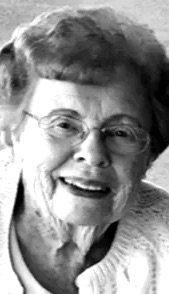 SEMINOLE, Florida – Edith (Savage) Blanchard, 91, passed away peacefully on Thursday, September 26, 2024, in Largo, Florida. Edie was born on November 13, 1932, in Skowhegan, daughter of Edward and Alma Noreen (Kaneen) Savage.
SEMINOLE, Florida – Edith (Savage) Blanchard, 91, passed away peacefully on Thursday, September 26, 2024, in Largo, Florida. Edie was born on November 13, 1932, in Skowhegan, daughter of Edward and Alma Noreen (Kaneen) Savage.
After graduating from Skowhegan High School, Edie married Ernest Blanchard, and together they built a home in Norridgewock. Edie dedicated 41 years of service to Gifford’s Ice Cream, where she was known for her kindness, strong work ethic, sense of humor, organizational skills, and remarkable memory. Affectionately known as “Edie,” she never missed sending a birthday card to those closest to her. Edie loved to tell a good joke; her matter of fact and down-to-earth delivery always elicited laughter. She brought joy and kindness to the world, leaving a legacy that will inspire all who knew her.
In retirement, Edie and Ernest enjoyed spending their winters in St. Petersburg Beach, Florida She never missed a chance to play BINGO with her friends.
She was predeceased by her husband, Ernest Blanchard; her parents, Noreen and Edward Savage; her brother, Gerald Savage and his wife, Jennifer Savage, of Saco.
Edie is survived by three generations of nieces and nephews.
A service will be held in the spring in her honor.
Please visit Edith’s memorial page at https://svremembrancecenter.com/obituaries/edith-blanchard-2024 where condolences, photos, and special memories may be shared.
BETTY JANE RANCOURT
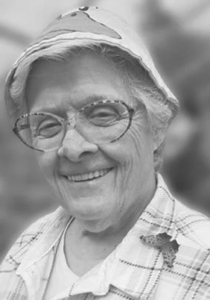 WATERVILLE/WINSLOW – Betty Jane (Belanger) Rancourt, 78, passed away Tuesday, October 8, 2024, peacefully, at MaineGeneral Rehabilitation and Long-Term Comfort Care Unit at Glenridge, in Augusta, from complications due to cancer.
WATERVILLE/WINSLOW – Betty Jane (Belanger) Rancourt, 78, passed away Tuesday, October 8, 2024, peacefully, at MaineGeneral Rehabilitation and Long-Term Comfort Care Unit at Glenridge, in Augusta, from complications due to cancer.
She is survived by her son and daughter-in-law, Sady and Nicole Rancourt, of Westbrook, as well as many nieces, nephews, great-nieces, nephews.
She is predeceased by her husband Robert Rancourt, her brother and sister-in-law, Ronald and Jeanette Belanger, her sister and brother-in-law, Jeannine and Edwin Jandreau, and brother James Belanger.
Betty was born in Waterville, on March 3, 1946, to her late, parents Jerome and Mary Jane (Compagnon) Belanger. Betty graduated from Mount Merici High School, in Waterville. She then attended and graduated from Amhurst College, in Connecticut, with a four-year degree in sociology and minor in psychology.
After graduating college, Betty went on to work with the Peace Corp, in Senegal, Africa. While continuing to work for the Peace Corp, she returned to Washington, D.C., in 1970 where she gave birth to her only child and son, Sady.
Betty made the decision to return home to Waterville in 1970 to raise her son among family and friends. Betty went on to work in a local nursing home. She took a position at Seton and Thayer hospital, in Waterville, in the Respiratory Therapy Department from 1973-1979. During this time, Betty married the love of her life, Bob Rancourt, on July 26, 1975.
In 1979, Betty made the decision to do daycare in their home. Caring for and loving children was definitely her favorite job and her life calling. She did this for 18 years and took care of over 60 children, all who she grew to love. Long after Betty finished daycare, many of these parents and children played a lifelong role in her life, involving her in their activities and sports as well as milestone celebrations. At age 50, Betty returned to school to study accounting and business. This led to a new career path working at HealthReach/Maine General, in the Benefits Department, making another family to love. She retired in 2014.
Betty was a member of the Notre Dame Church community her entire life. From the 1976 – 1996, Betty was a member of the Lady’s Guild, Finance Committee and volunteered with Catholic Charities Appeal, Soup Kitchen, Homeless Shelter and Youth Ministry Group.
Betty loved celebrating people and bringing joy to their lives. She was famous for celebrating everything that could be celebrated. The Christmas holiday season was her absolute favorite. She made sure everyone in her life had gifts. Betty valued every relationship she had in her entire life.
Betty was famous for her incredible snowman collection, most of which were gifts from family and friends. For the last 20 years, Betty could be seen cruising through the greater Waterville area in her yellow VW Beetle named Joy. Betty enjoyed following football, basketball, hockey and golf. Her greatest passion for the last 15 years was playing Pickleball three times a week, one year attending the Senior Olympics. She loved the sport and camaraderie of her Pickleball group.
A funeral Mass will be held on Saturday, December 14, at Notre Dame Church, 116 Silver St., in Waterville, at 11 a.m., with a ‘Celebration of Life and Joy’ to be held afterward in the Notre Dame Parish Hall. The burial will be announced at the service.
Please visit Betty’s memorial page at https://svremembrancecenter.com/obituaries/betty-rancourt where condolences, photos, and special memories may be shared.
DANA J. COCHRAN
 BELLEFONTAINE, Ohio – Dana J. Cochran, 84, recently of Bellefontaine, Ohio, and formerly of Winslow, passed away at Ayden by Belle Springs nursing home in the late night of Friday, October. 25, 2024. He left to join his wife of 66 years, Jane A. (Buzzell) Cochran. He was born in Waterville, on January 15, 1940, to the late Dana W. Cochran and Rowena (Morse) Cochran.
BELLEFONTAINE, Ohio – Dana J. Cochran, 84, recently of Bellefontaine, Ohio, and formerly of Winslow, passed away at Ayden by Belle Springs nursing home in the late night of Friday, October. 25, 2024. He left to join his wife of 66 years, Jane A. (Buzzell) Cochran. He was born in Waterville, on January 15, 1940, to the late Dana W. Cochran and Rowena (Morse) Cochran.
He was educated in Oakland, and attended some classes at the University of Maine.
On September 5, 1956, he married his childhood sweetheart, Jane and they raised seven children in Oakland, (four sons and three daughters) who all survive. Daniel J. Cochran, David J. Cochran (wife, Dawn), Joy D. (husband, Claude Leroux, Jr.), Jill D. Cochran (Donny Farrington), Jonathan D. Cochran (wife, Cathe), DeAnna J. (husband, David E. Trask), and Jeremy D. Cochran; their fourth daughter by windfall, Diana M. (Otis) Cochran, who was always there with a song, a smile, and sentimental words and deeds so cherished. Dana is also preceded in death by Geneva Cochran, first wife of David and brother, Allen B. Cochran (1939). He is also survived by his brother and sister-in-law, Warren A. and Ethel (White) Buzzel, of New Hampshire, and Florida.
Being raised in Oakland, by his grandparents, Ai and Ina (Small) Cochran during World War II, he was privileged to be able to live around (and in) the water at Messalonskee Lake. He worked with his mother, who was the owner of Morse’s Point Bathing Beach and therefore developed his natural affinity for swimming, diving, boating, camping, fishing and many, many campfires. He met Janie in Sunday School at the Oakland Baptist Church in 1948, it was then that he says he knew he had met his future wife.
He was proud to be a grandfather to 18 children, great-grandfather to 28 children, and great-great grandfather of two. He was the uncle, great-uncle, great-great-uncle, to many nieces, nephews.
Dana was a salesman for the biggest part of his adult life, he sold everything from bread, Pepsi, Pepperidge Farm cookies, Frito Lay’s, welding equipment and finally Snap-On Tools. He was gifted in the art of gab. He had many acquaintance type friends because he could be very entertaining in his Maine vernacular and the stories he told.
Dana loved toys, there’s just no getting around that fact. He loved cars, boats, trucks and John Deere. He was still talking about trying to drive Claude’s red (retro) sports car, renewing his driver’s license and getting back out on the JD Gator. There were many conversations about vehicles of all forms.
There will be a celebration of Dana’s life, funeral and graveside services held on Saturday, May 24, 2025, at 1 p.m. – location to be confirmed – Graveside service immediately following at Lakeview Cemetery, Oakland, Maine.
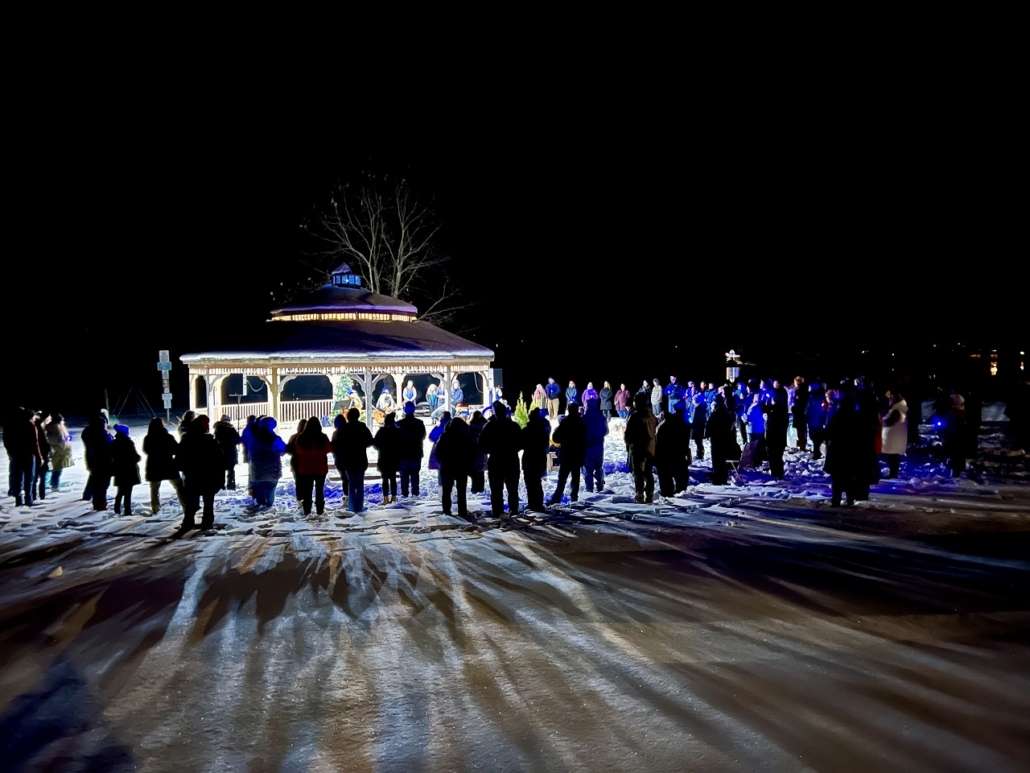 The ShineOnCass Foundation will host its 4th Annual Blue Christmas Ceremony for grieving families and friends, and those who support them, Saturday, December 21, at sunset, starting at 4 p.m., on the Winter Solstice – the longest and darkest night of the year. Blue Christmas will feature music, speakers, and a reading of submitted names of loved ones’ lost and the lighting of memorial blue candles.
The ShineOnCass Foundation will host its 4th Annual Blue Christmas Ceremony for grieving families and friends, and those who support them, Saturday, December 21, at sunset, starting at 4 p.m., on the Winter Solstice – the longest and darkest night of the year. Blue Christmas will feature music, speakers, and a reading of submitted names of loved ones’ lost and the lighting of memorial blue candles.


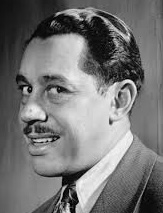



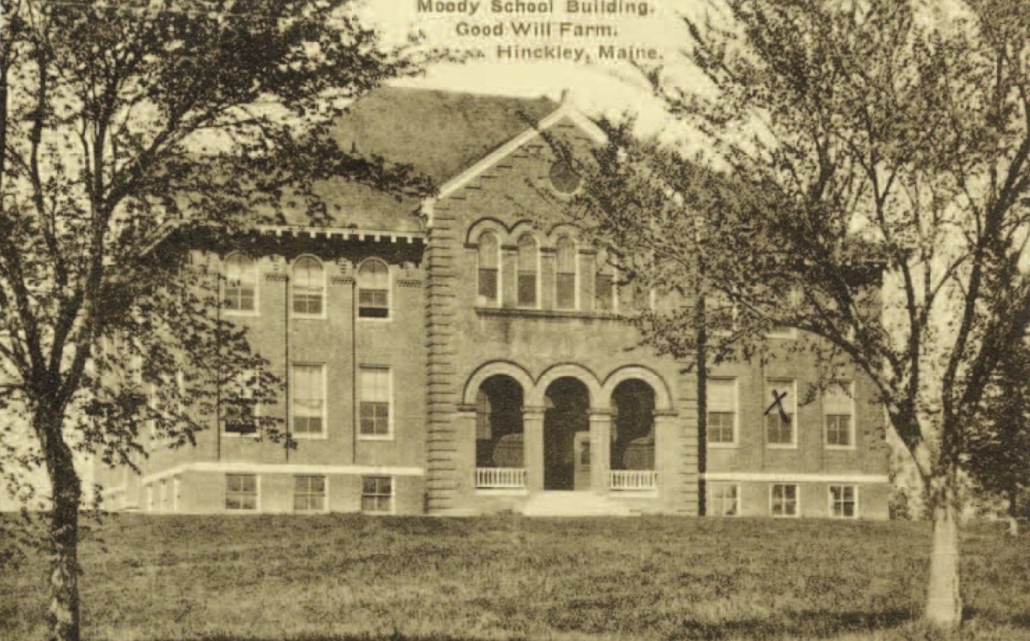

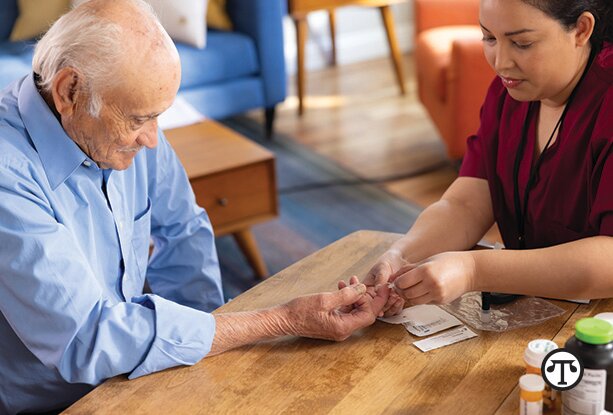 Early screening, lifestyle changes and personalized medical care can help you protect yourself from this life-altering disease.
Early screening, lifestyle changes and personalized medical care can help you protect yourself from this life-altering disease.

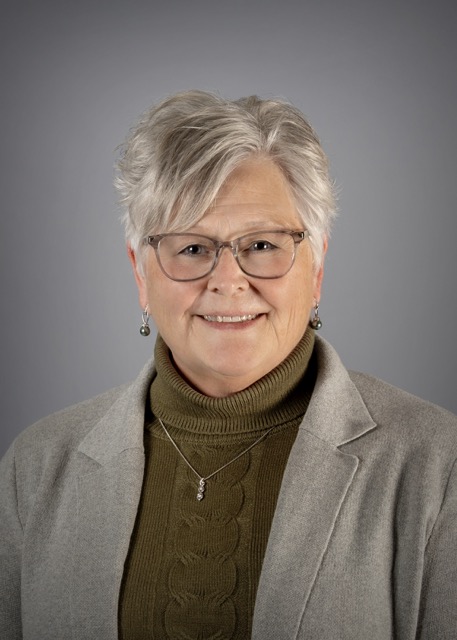
 by The Village Parson
by The Village Parson













